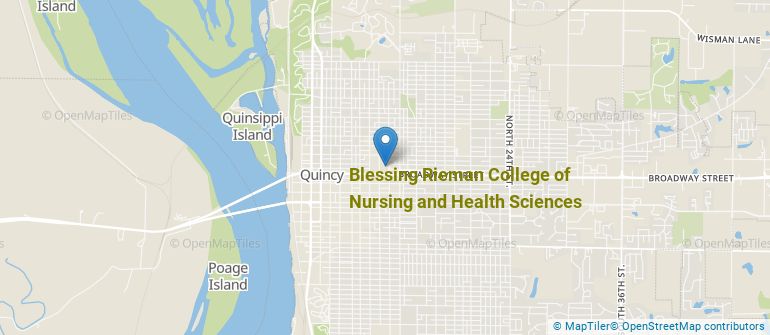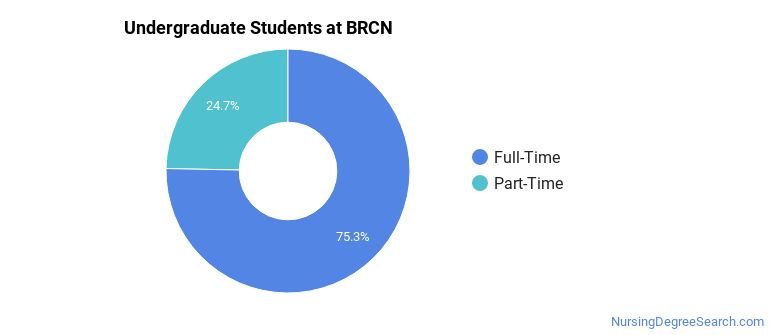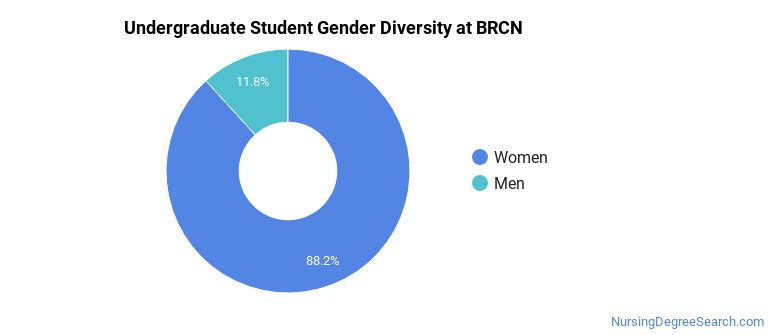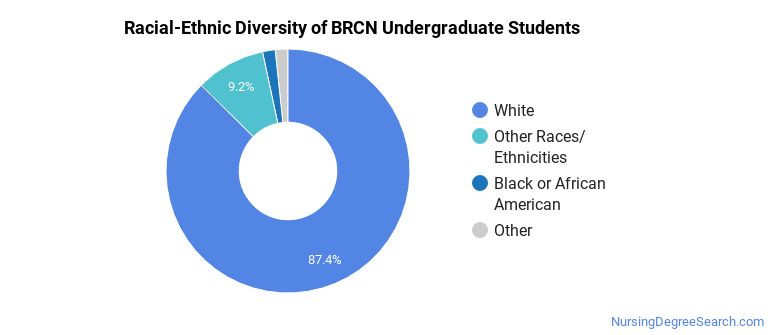Blessing Rieman College of Nursing and Health Sciences Nursing Programs
Blessing Rieman College of Nursing and Health Sciences is a private not-for-profit institution located in Quincy, Illinois. The charming, small-town atmosphere of Quincy draws many to the area.
Where Is Blessing Rieman College of Nursing and Health Sciences?

Contact details for BRCN are given below.
| Contact Details | |
|---|---|
| Address: | 3609 North Marx Drive, Quincy, IL 62305-7005 |
| Phone: | 217-228-5520 |
| Website: | www.brcn.edu |
How Do I Get Into BRCN?
You can apply to BRCN online at: www.brcn.edu/
Can I Afford Blessing Rieman College of Nursing and Health Sciences?
Blessing Rieman College of Nursing and Health Sciences Undergraduate Student Diversity

There are also 19 graduate students at the school.
Gender Diversity
Of the 119 full-time undergraduates at BRCN, 12% are male and 88% are female.

Racial-Ethnic Diversity
The racial-ethnic breakdown of Blessing Rieman College of Nursing and Health Sciences students is as follows.

| Race/Ethnicity | Number of Grads |
|---|---|
| Asian | 1 |
| Black or African American | 2 |
| Hispanic or Latino | 1 |
| White | 104 |
| International Students | 0 |
| Other Races/Ethnicities | 11 |
Blessing Rieman College of Nursing and Health Sciences Nursing Concentrations
The table below shows the number of awards for each concentration.
| Major | Bachelor’s | Master’s | TOTAL |
|---|---|---|---|
| Registered Nursing | 48 | 6 | 54 |
| TOTAL | 48 | 6 | 54 |
References
*The racial-ethnic minorities count is calculated by taking the total number of students and subtracting white students, international students, and students whose race/ethnicity was unknown. This number is then divided by the total number of students at the school to obtain the racial-ethnic minorities percentage.
More about our data sources and methodologies.
